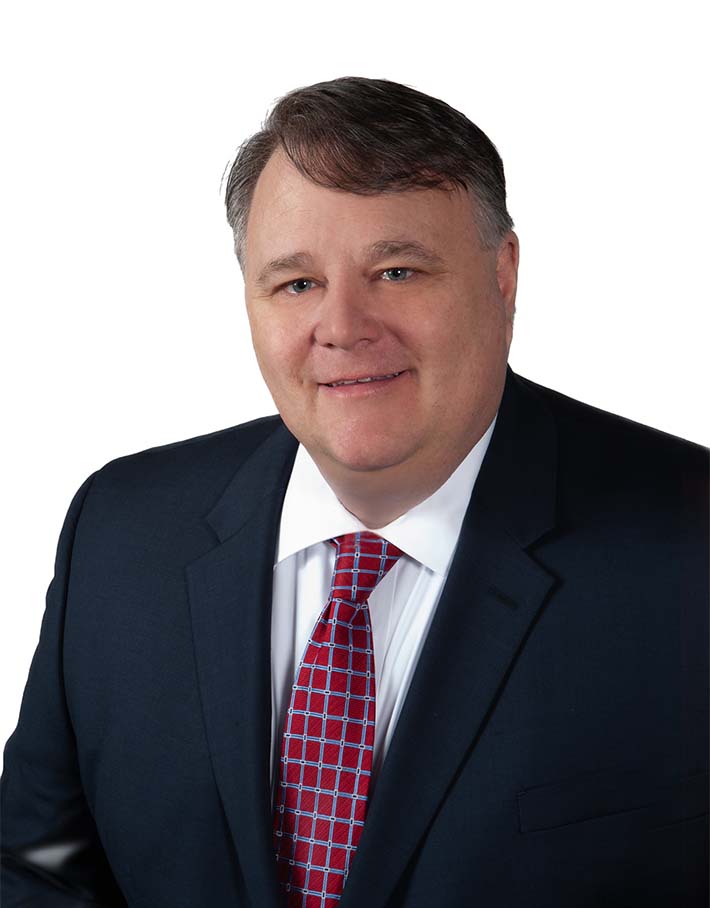Cut to the Chase – Get the Best Clearing Firm Options
By David Williams, Jay Donlin and Pete McAteer
Subscribe to our original industry insights
Your clearing and custodial partnerships touch every part of your business: your clients, financial professionals, technology platform, operations, digital experience and compliance are just some of those dependencies. Don’t forget about the impact on your P&L, too. In today’s podcast, Oyster’s clearing and custodian experts share their experience with managing clearing platform technology, consulting and integration, including utilizing the other services these firms offer.
Learn More with these Related Resources
- Industry Insights: Exploring Broker Dealer Business Models For Profitability
- Broker Dealers: Is Affiliation The Right Option?
- Making Your Clearing Firm’s Technology Work for You
Get the Most Out of Your Clearing Firm Relationship
Now is the time to take stock of your clearing and custodian firm relationship and ensure that it is doing its part to keep your firm growing. At Oyster Consulting, we help you maximize one of the most important strategic relationships you have – your clearing and custodian partnerships. Our consultants stay current with major clearing and custodial firms, their service offerings and representative clients. We use that knowledge to help you review your current contract and offer a comprehensive strategy to make sure you get optimal value.
Transcript
Transcript provided by TEMI
Libby Hall: Your clearing and custodial partnerships touch every part of your business from your clients and financial professionals to technology, operations, and digital experience. In today’s podcast, Oyster’s Clearing and Custodian Experts, Dave Williams, Jay Donlin, Pete McAteer, and Jim Roth, share their experience with managing technology consulting and integration, and utilizing other services that these firms offer.
David Williams: Hello, my name is David Williams, and welcome to the Oyster Stew Podcast. Today we are going to talk about managing your clearing relationship, and with me today is Pete McAteer, Jay Donlin and Jim Roth. So, if you’re in an introducing broker, there’s probably no more important relationship that you have is your clearing relationship. When you think about a relationship that touches almost every single aspect of your business, whether it’s your financial advisors, your clients, your support staff, it certainly should be at the top of your list. From a, from a business relationship standpoint, I don’t think we can underscore the importance of the technology, not only the proprietary technology that the clearing firm offers, but the ability to connect to other technology vendors. Is there a way for a client firm to manage the technology offering of their clearing firm? Is there a way to do that? How should an introducing firm speak to their clearing firm about technology? Why is that so important to be understanding about all of the add on services that are available of all of the parts of the offering?
Pete McAteer: Hey, Dave, that’s a great question and I’m glad we’re discussing it here today, because it goes back to the whole notion of governance and ongoing communication and interaction and understanding of what the firm’s needs are. Making sure those are conveyed appropriately and in a timely fashion to your clearing firm, and that the clearing firm is ingesting that and digesting and understanding what those needs are. First and foremost, what we always recommend is make sure that you’re aware of all the tools and capabilities that your clearing firm has. We see it so many times where firms will go out and buy this new shiny object and not leverage what they’re already paying for. It may not be the best, but it could be enough of the capability to provide that functionality, to provide that process to support the firm in a meaningful way without additional expenditure.
If there are challenges, with certain functionality that doesn’t meet your needs, again, that governance process, the enhancements to put those out on the table and figure out better ways to do things, understanding the capabilities, understanding the needs. Also, this is something we see a lot of, unfortunately for some of the firms that they go out and they buy the new mouse trap, the new shiny thing, and they’ve heard some griping and grumbling, et cetera. This is where change management comes into play. Where are you truly realizing the intended business benefit or the value of your investment in the technology? And that goes for your clearing firm. That goes for the other vendors that you enlist or that you connect or integrate to your platform. So ensure that what you’re using is being used and you’re squeezing the value out of those tools before you go buy new tools and try to again, whack the mole. We use the whack-a-mole analogy quite a bit, but ensure that it’s being used. You’re monitoring, you’re reinforcing, and you’re measuring the true value of what you’re investing in your technology platform.
Jay Donlin: Also Dave, just to tie into that, we talked about relationship governance. One of the things that the clearing firm should be providing you is a technology roadmap. They typically do this at their conferences, but you want it more often than once a year. And they do communicate out. A lot of times people get sidetracked and they don’t see the communications coming out regarding enhancements and that sort of thing. But as part of your relationship management process with that organization, they should be regularly providing updates to their technology roadmap, just so you know what’s coming and how you might be able to leverage it or use it. To Pete’s point, a lot of times tools are in there or being developed or being integrated that you may not realize that could benefit your firm, increase your advisor productivity, increase your operations productivity, and it’s important that you have that as part of the touch point with your relationship managers at the clearing organization.
David Williams: Could there be an expectation from a clearing firm around, I’ll call it, a consultative process that would help a firm make decisions around buying technology, building technology, creating a proprietary workstation that might look different than some of their competitors out there? Can clearing firms offer advice around technology and what you should be doing based on your size and the expense of doing it?
Jay Donlin: I don’t know how deep they go with that, Dave. They will give you an opportunity to present to them – Hey, we’re looking to have this solution tech. A lot of times they will try to make sure that you know, they’re pointing to something they offer within their stack, but I don’t know how deep they will go in consulting with you on how you should build your tech stack. They will for sure help you integrate. The larger ones will. But it’s something that I would say, I would not look to my clearing firm to tell me what I need to do to build my own tech stack out.
Pete McAteer: Clearing firms are offering API stores, if you will, or a library that you can go check out their integrations, check out their APIs, and leverage those to integrate into their platforms. To be frank, some of those APIs are more robust than others and not all APIs are flavored or shaped the same. So just as a caution to ensure that you understand the depth, the breadth, the number of data elements, if it’s bilateral, if it’s real time, if it’s batch – understand the qualities of those integrations and those integration opportunities before making a decision and leaping into adding onto your platform and building out your tech stack. Ensure you’ve done that due diligence and you understand the level to which you can integrate and where those warts, maybe those gaps, maybe some of those obstacles may present themselves upon completion and implementation of the new functionality. But that’s something that’s a long haul. We’ve seen it happen many times that right sizing your expectations ahead of that implementation will certainly yield a better result when you roll it out to your firm.
David Williams: Well said, Pete. Let’s talk about all of the other products and services that clearing firms make part of their offering. When I mentioned earlier that clearing firms offerings have evolved, probably this is the area that has changed so dramatically over the last few years is how firms are attempting to differentiate themselves in the marketplace. So let’s talk about some of the products and services that clearing firms offer that don’t fit into kind of the operational component or the technology. com component. What other things do clearing firms do for their clients?
Jim Roth: Where the clearing firms really do bring a lot of value is the fact that they have a number of compliance and regulatory experts there that many of the broker dealers don’t necessarily leverage. Now, again, that’s not necessarily in conflict of what we offer, but the fact of the matter is having a Joan Schwartz at Pershing, where she’s representing hundreds of broker dealers and RAs giving Canon, has provided wisdom and guidance on trends and opportunities that’s there. And I don’t think a lot of customers leverage that clearing firm, but yet on the other hand, technologically that’s something they don’t do. And that’s something that you’re right, we absolutely can help because the integration, they’re self-serving, they’re only interested in what they can provide and the integration, they can give you guidance, but you know, they’re not going to point the finger and say, Go to Salesforce. They’re going to say, I’ve got a connection to Salesforce.
With the shift to advisory continuing, the clearing custodians are becoming more and more broad in their offering of advisory related products that you can leverage versus building your own. They’re putting together systems for billing, performance reporting and that sort of thing in order to support that line in the business more effectively. Trading has become a commodity, and so it’s not something that people even think of. But speed of execution, that sort of thing, is a hot topic in the industry. And so, these clearing providers are providing best execution services, including audits, reviews, that sort of thing. That’s something that you need to be able to leverage as a firm because you don’t have the capacity to do the extensive review that they have. Usually nor do you want to <laugh>, it can be very expensive to do it, to take on that as a deep dive view of best execution. So there’s some of those services delving down into banking services, and there’s a lot of banking services now being provided. lending capabilities that are not investment related, that some of the providers are providing trust services that they can either have themselves provide, or they have strategic partners that will provide services on an introducing basis through them. So those are the kind of things that firms are kind of developing out more extensively in order to more broadly meet the wealth management area of our industry.
Jim Roth: Hey, Dave, in addition to what Jay just reported, you know, there’s no question that the regulatory environment has become more challenging. So every clearing custodial firm has resources to provide you guidance, provide you insights on the trends and opportunities that the regulatory bodies are reviewing since they represent hundreds of broker dealers and RAs. I’ll second Jay’s comments as far as the advisory scope, and more importantly, the interest in lending related services. That has been extremely popular now. So many of your clearing custodial options have resources that are available to you because you’re really for your end investor. You’re giving your advisors the opportunity to support both, both the asset and liability side of the client’s statement. And that has been extremely attractive and very popular.
David Williams: You know, a number of clearing firms nowadays say, “We’re going to help you grow your business.” That’s a wide-open conversation that could include organically helping advisors be more productive and gather more assets. It could fall under the category of helping you recruit financial advisors from a managing your clearing firm standpoint. How should you be interfacing with your clearing firm to explore and hopefully take advantage of all of those types of services that could hopefully help your top and bottom lines?
Jim Roth: Dave, I think what you should do is assign members of your management team and offset with members of the clearing or custodial relationship teams as well. One may be more operational in nature, another may be more compliance in nature. How about your CFO looking at their overall revenues and profitability of the relationship. And Dave, I think we could probably produce another podcast just on that topic alone as so much has changed and we’ve been fortunate enough to work with a number of broker dealers and to assess their overall profitability of the relationships. So I would encourage folks to align their management team with the counterparts at the clearing firms, and that would enable the firms to continue to review both organic and inorganic growth and how they can continue to build upon their business.
David Williams: Yeah. Pete McAteer, I’m going to call on you from a practice management standpoint. You’ve worked with a lot of clearing firms. What kinds of services are available from a clearing firm, typically in the broad category or subject practice management?
Pete McAteer: There are a number of areas that clearing, and custody firms can bring thought leadership, can bring practice management, support, training, product information, practice optimization. It’s something that we’ve done some consulting as well on is how to kind of clean up the book so that you can focus on the right things and build in the right practices. They’re things like partners that certain clearing firms have relative to financial planning tools and that are more fully integrated than others in certain platforms to ensure that the relationship and the stickiness of the relationship is embedded or interwoven into your relationship with your advisor’s relationship with their investors, with their clients that they’re advising. It’s a more fulsome integrated approach. We see the clearing custody firms offering these services out. And as I’m going back to a comment on another question earlier in this podcast, where are you squeezing the value out of your current relationship?
You hear about all these things during the sales process. You hear about all these things during the honeymoon process, but are you holding and reaping the value out of the relationship and the services that are offered by your clearing custody provider? It’s important to hold them accountable. It’s important for you to go to the shelf and grab those things if they are on the shelf for you. So how do you implement those? How do you provide those to your advisors? And again, once you’ve provided those services and those opportunities to your advisors, how do you ensure they’re being leveraged, they’re being utilized, and they’re being effectively implemented across the board?
David Williams: Good comments. Let’s finish up today by talking about probably the centerpiece of a clearing relationship, which is the clearing contract. And we know that a clearing contract defines the roles and responsibilities of both parties, but when most people think of clearing contracts, they think of pricing, they think of a term of that contract which we see out in the marketplace can be anywhere from three to typically seven years. So what should a firm do in terms of managing the relationship as it relates to the clearing contract? What should be they be thinking about? Isn’t the bare minimum thing to be thinking about is when is that clearing contract expiring?
Jay Donlin: Yeah, Dave, I think that that’s the number one thing. I think about 18 months out, two years out from your contract expiration, you should assess kind of where you are with your clearing firm. Over the last probably 30 years, for 20 of the last 30 years clearing contracts were fairly consistent across the industry. The economics were very similar. The structures were very similar. Over the last 10 years there’s been an evolution. And this is driven by the evolution within the industry itself to be more flexible in pricing in financial models on how expenses and revenues can be shared across with your clearing firm. So there’s a lot more flexibility that has been created with these clearing firms and custody firms out there. And it’s a direct result of demand. The firms that are out evolving themselves are going to the clearing firms and saying, Hey, if you could do this for me, if you could structure it this way for me, it would be better, more in line with my business model. And they’re willing to do that now. Before it was all pretty standard, but they’re getting very flexible and very creative now in addressing the needs of their correspondence.
Pete McAteer: Jay, can you comment a little bit more deeply on that? Because we hear a lot from our clients just how complicated, how complex, how difficult it is to manage these expenses and you get an clearing invoice that’s got 153-line items in it and you’ve got to try to reconcile all that. Can you talk about the different strategies and things to simplify your financial arrangement with your clearing custody provider?
Jay Donlin: Yeah. A lot of the clearing custody providers before there was a lot of ancillary fees, nickel and diming, and a lot of people used that terminology, Nick, one diamond and there are some clearing firms that are better at counting nickels and dimes than others in their systems. And so the invoices could be just hundreds of lines long every month, and it would be very cumbersome to reconcile and make sure that you’re getting charged what you’re supposed to be charged and your clients are getting billed what they’re supposed to be billed. And so a lot of firms have pushed to the clearing firms the concept of bundling. A lot of these ancillary fees, whether it be bundling into the standard ticket charge model or bundling into a basis points model or a combination thereof. There’s even been concepts floated within the clearing firms that we have talked to where it could be an annual fee, flat annual fee for clearing all kind of different creative ways in order to kind of simplify that process that has traditionally been many line items and many different charges over the years if you’re a client.
David Williams: Firm and your clearing contract is expiring, when is a good time to start thinking about that conversation you should have with your firm about the next contract? When, what’s a good timing for that?
Pete McAteer: Any time is a good time up in the hood.
Jim Roth: Dave, I think Jay answered that already. It was, he said 18 months, right, Jay?
Jay Donlin: Yeah, 18 months is probably a good timeline to start really assessing where you’re at. If you’re extremely unhappy with your clearing firm, to Pete’s point, anytime is good. There are incentives out there to address a transition. And so at any time, if you’re really not getting the value out of your clearing relationship, any time is a good time to review it.
Pete McAteer: I think just as you go to conferences to see what other vendors are out there, to see what other services are out there, it’s important to understand that the clearing and custody landscape and keep yourself abreast and refreshed on all those alternatives that are out there. Things change your perceptions of certain firms that you may have worked with, maybe you’d seen a presentation from them 12 years ago and you didn’t like something, things change. It would be, we recommend that along with that cycle of your clearing contract that you do review and assess and entertain, have discussions with these other clearing firms. Keep those conversations going. Keep yourself abreast of what’s going on out there, what the improvements are, what the enhancements are, what the integrations are. What additional value or services are they providing on top of what you may have perceived 10, 12 years ago to be the case? And it might not have floated your boat at that time. Might not have peaked your interest, but it’s important to keep those conversations going.
David Williams: All right. Well, thank you oyster team for your insight sharing your thoughts on this important business relationship. Hopefully you’ve heard some ideas that you’re going to take away from this con conversation that’ll make your relationship a little bit more interactive and hopefully beneficial to your firm. Thank you.
Libby Hall: Thanks everyone for listening. If you’d like to learn more about our experts and how Oyster can help your firm, visit our website at oysterllc.com. And if you like what you heard today, follow us on whatever platform you listen to and give us a review. Reviews make it easier for people to find us. Have a great day.







